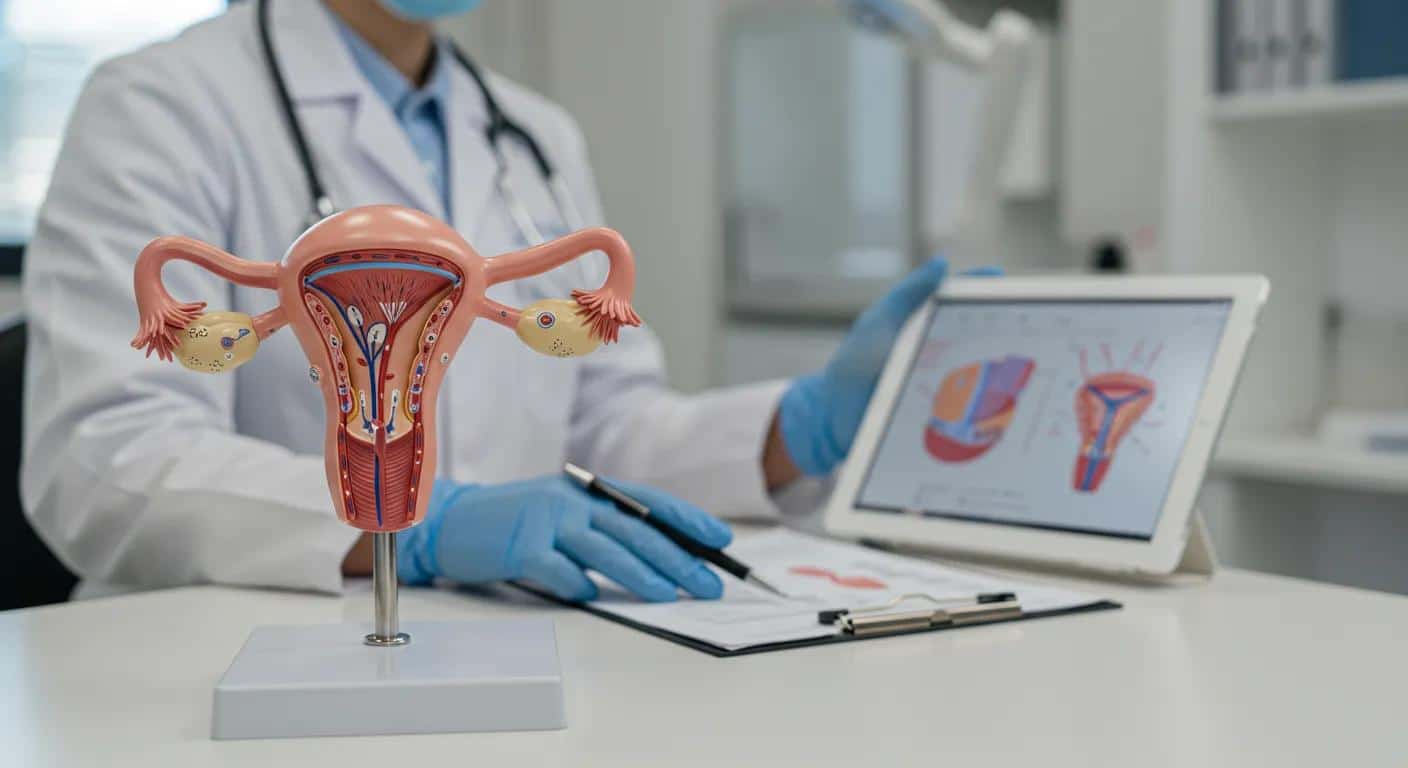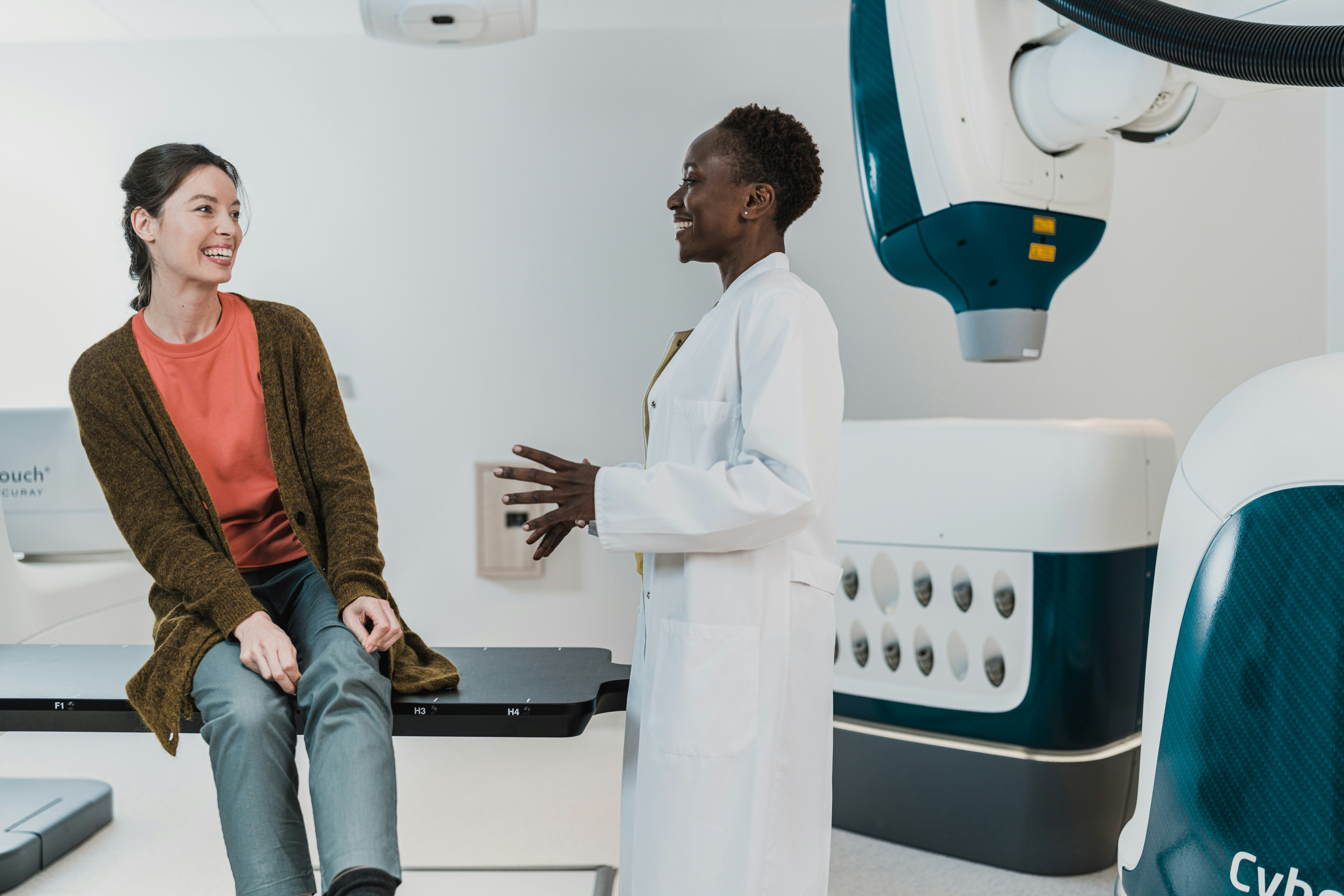Endometriosis affects millions of women worldwide and often leads to chronic pain and other debilitating symptoms. Standard treatments focus on suppressing symptoms through hormonal therapies, pain medications, and surgery, while comprehensive pain management addresses physical discomfort along with the emotional, nutritional, and functional challenges. This article explains these differences by outlining the standard of care, the principles of comprehensive management, and patient outcomes. Understanding these distinctions helps patients work with healthcare providers to choose treatment plans that relieve pain and improve overall quality of life.
Key Takeaways
- Standard treatments use hormonal therapies, analgesics, and surgery to suppress symptoms.
- Comprehensive pain management uses a biopsychosocial model to treat underlying causes and improve overall health.
- Standard care focuses on short-term relief, while comprehensive management promotes sustainable long-term well-being.
- Patient outcomes, including pain reduction, side effects, and quality of life, differ significantly between these approaches.
- A holistic, multidisciplinary approach is essential for optimal endometriosis care.
Defining Standard Endometriosis Treatments and Their Primary Focus

Standard endometriosis treatments aim to reduce pain and control disease progression. They typically use hormonal therapies, pain medications, and surgical procedures.
Overview of Common Hormonal Therapies for Endometriosis
Hormonal treatments (e.g., oral contraceptives, progestins, GnRH agonists) work by suppressing the menstrual cycle and limiting the growth of endometrial tissue outside the uterus. Although they often provide symptom relief, they may cause side effects such as mood changes and weight fluctuations.
Role of Analgesics and Anti-Inflammatory Medications in Symptom Control
Analgesics, including NSAIDs, reduce inflammation and alleviate pelvic pain. These medications are effective for temporary relief but may lead to gastrointestinal issues with long-term use and do not address the underlying pain causes.
Surgical Interventions in Conventional Endometriosis Care
Laparoscopic surgery removes or destroys endometriotic lesions, which can reduce pain and sometimes restore fertility. However, recurrences are common and postoperative complications can occur.
Limitations of Standard Treatments in Addressing Chronic Pain
Standard treatments focus on lesions rather than the chronic inflammatory and neurological changes that drive persistent pain. As a result, many patients experience recurring symptoms despite regular treatment.
Typical Patient Pathways in Standard Endometriosis Care
Patients often follow a linear path: beginning with medication and escalating to surgery if symptoms persist. This cycle may not fully address emotional distress or daily functional limitations.
What Distinguishes Comprehensive Pain Management in Endometriosis Care

Comprehensive pain management represents a holistic shift in treatment. This approach not only eases physical pain but also improves mental health, nutrition, and overall resilience.
Adopting a Biopsychosocial Model for Endometriosis Pain
This model considers biological, psychological, and social factors. By treating mental health issues such as anxiety and depression along with physical symptoms, comprehensive care addresses the full spectrum of pain.
The Multidisciplinary Team Approach to Endometriosis
A multidisciplinary team—including gynecologists, pain specialists, physical therapists, nutritionists, and mental health professionals—creates a coordinated, long-term treatment plan that addresses every aspect of the patient’s health.
Individualized Treatment Plans Tailored to Patient Needs
Comprehensive management is flexible and patient-specific. It often combines advanced medical therapies with lifestyle modifications to address various triggers and symptom severities, thereby improving patient satisfaction and adherence.
Emphasis on Long-Term Wellbeing and Quality of Life
Rather than offering only immediate relief, comprehensive pain management aims to enhance sleep, emotional well-being, and physical functionality over the long term with regular treatment reassessments.
Integrating Mental and Emotional Health Support
Cognitive behavioral therapy (CBT), mindfulness, and stress reduction techniques are central to this approach. These methods help manage psychological symptoms and often lead to significant reductions in perceived pain.
Core Components of Comprehensive Pain Management Strategies for Endometriosis

Comprehensive management encompasses several key strategies that work together to reduce chronic pain and boost overall wellness.
Advanced Medical Therapies Beyond Standard Options
New treatments such as aromatase inhibitors and neuromodulation therapies address underlying pain mechanisms, offering significant improvements when combined with traditional therapies.
Pelvic Floor Physical Therapy and Manual Techniques
Pelvic floor physical therapy aims to improve muscle function and reduce tension, while manual techniques alleviate spasms and enhance blood flow, leading to better mobility and less pain.
Nutritional Approaches and Dietary Modifications
Dietary interventions that include anti-inflammatory foods (rich in omega-3 fatty acids and antioxidants) play a vital role in reducing inflammation and have been linked to improvements in both symptoms and energy levels.
Mind-Body Therapies and Stress Reduction Techniques
Yoga, mindfulness meditation, and acupuncture help reduce stress and improve pain tolerance. These therapies support mental clarity while minimizing physical discomfort.
Comparing Treatment Goals: Standard Versus Comprehensive Approaches

While both standard and comprehensive approaches aim to reduce the burden of endometriosis-related pain, their treatment philosophies and long-term goals diverge significantly. Understanding these distinctions is crucial for patients seeking sustainable relief and better quality of life.
Symptom Suppression in Standard Endometriosis Treatments
Standard treatments are designed primarily for short-term symptom control. These interventions—such as hormonal therapies, NSAIDs, and surgery—can offer rapid relief by halting the menstrual cycle or excising visible lesions. However, they often focus on managing the symptoms rather than addressing the underlying biological and neurological processes that drive chronic pain. In many cases, patients may become reliant on medications over time, and recurrence of pain following surgery is not uncommon.
Root Cause Targeting in Comprehensive Pain Management
In contrast, comprehensive pain management addresses the multifaceted origins of chronic pelvic pain. This includes systemic inflammation, myofascial dysfunction, pelvic floor tension, central sensitization, and psychosocial stressors. By incorporating therapies that target these pain generators—such as physical therapy, anti-inflammatory nutrition, neuromodulation, and emotional health support—this approach offers more durable and preventative outcomes. It prioritizes treating the source of the pain, not just its symptoms.
Short-Term Relief vs. Long-Term Stability
Standard care often emphasizes immediate pain suppression, which can be critical during acute flare-ups. However, this relief may be temporary, especially if deeper contributors to pain are left unaddressed. Comprehensive management, on the other hand, focuses on long-term stability. It combines medical, physical, and psychological strategies to help patients build resilience against recurring symptoms and improve their functional capacity over time.
Fertility Considerations in Both Models
Fertility outcomes can differ based on the chosen treatment path. Standard treatments—especially those involving hormonal suppression—can negatively impact ovulation and reproductive function. Surgical interventions may also carry risks for reproductive organs. Comprehensive care takes a broader perspective by emphasizing fertility preservation, often integrating gynecologic expertise with reproductive planning, nutritional support, and stress reduction to support natural cycles and reproductive health.
Patient Empowerment and Active Role in Treatment
A defining feature of comprehensive pain management is the emphasis on patient agency. Patients are encouraged to take an active role in crafting their care plan, collaborating with a multidisciplinary team to address their unique needs. This patient-centered approach has been linked to improved adherence, reduced distress, and more meaningful improvements in overall well-being. In contrast, standard care models may position the patient as a passive recipient, limiting opportunities for personal input or holistic intervention.
Examining Patient Outcomes and Experiences in Standard vs. Comprehensive Care

Assessing patient outcomes is essential to determining the true effectiveness of any treatment approach. When comparing standard endometriosis care with comprehensive pain management, distinct differences emerge in areas such as pain reduction, functional recovery, side effects, and overall life satisfaction. These variations highlight how treatment philosophies influence both short-term relief and long-term health.
Pain Reduction and Functional Improvements
Patients receiving comprehensive care often report greater reductions in chronic pain intensity and enhanced daily function. This improvement is linked to the multimodal nature of comprehensive care, which targets not only visible lesions but also muscular, neurological, and emotional contributors to pain. In contrast, patients managed solely with standard therapies—such as hormone suppression or surgery—may find that pain relief is partial or temporary, especially if other factors like pelvic floor dysfunction or stress go unaddressed.
Side Effects and Treatment Tolerability
Standard treatments, particularly hormonal therapies and surgical interventions, carry a higher risk of adverse effects. These may include mood changes, weight fluctuations, gastrointestinal discomfort, or complications from repeated procedures. Conversely, comprehensive treatment plans—which often integrate lower-risk interventions like physical therapy, dietary changes, and psychological support—tend to have fewer side effects. This increases patient tolerability and can enhance long-term adherence to the care plan.
Recurrence of Symptoms and Long-Term Pain Control
Recurrence rates remain a challenge in endometriosis care. Standard approaches, which focus on symptom suppression rather than root causes, are often associated with higher recurrence—especially after surgical interventions where not all disease tissue can be removed. Comprehensive care, by addressing systemic inflammation, pain sensitization, and muscle tension, aims to break the cycle of recurring pain. This root-cause focus often results in more sustained symptom control.
Patient Satisfaction and Quality of Life Outcomes
Patients treated through comprehensive pain management models frequently report greater overall satisfaction with their care. Improvements in emotional health, physical functioning, sleep quality, and self-efficacy contribute to a more holistic recovery experience. Standard care, while effective for some, often leaves patients feeling underserved or stuck in a repetitive cycle of temporary relief and symptom return. Quality of life metrics—including mental health, mobility, and productivity—consistently favor integrative, multidisciplinary approaches.
Diagnostic Delays and Barriers to Accessing Care
One persistent issue across both models is the delay in diagnosis. On average, patients with endometriosis experience years of misdiagnosis or symptom dismissal before receiving proper care. Standard pathways often fail to account for the complexity of pain presentations. Comprehensive care not only emphasizes earlier intervention through a broader lens but also acknowledges disparities in access due to insurance limitations, lack of provider training, and regional gaps in multidisciplinary services. Advocating for equitable access and individualized treatment pathways is a core part of the comprehensive care model.
Navigating the Shift Toward Holistic Endometriosis Care

A growing movement within both medical communities and patient circles is reshaping how endometriosis is understood and treated. This shift toward holistic care reflects a deeper recognition that managing endometriosis effectively requires more than just controlling symptoms—it demands addressing the full spectrum of physical, emotional, and lifestyle-related factors that influence chronic pain and overall health.
Recognizing the Need for a Broader Treatment Perspective
Traditional care models have long focused on suppressing hormonal cycles and removing visible disease through surgery. However, an increasing body of research and lived patient experience shows that these methods, while important, often fail to resolve long-term pain and dysfunction. As a result, both patients and forward-thinking clinicians are acknowledging that a successful treatment strategy must incorporate lifestyle interventions, nutritional support, physical therapy, and psychological care. This broader, integrative perspective aligns more closely with the complex and multifactorial nature of endometriosis.
Overcoming Barriers to Comprehensive Pain Management
Despite its benefits, access to comprehensive care remains limited. Major barriers include inconsistent insurance coverage for services like pelvic floor therapy or mental health counseling, a shortage of providers trained in interdisciplinary care, and a lack of awareness among patients about alternative treatment paths. To expand access, healthcare systems must prioritize provider education, reimbursement reform, and wider adoption of multidisciplinary team models. Public health initiatives that increase awareness of endometriosis and its diverse symptoms are also key to early diagnosis and appropriate care.
The Role of Patient Advocacy in Shaping Future Care
Patients themselves are at the forefront of driving change. Through online communities, advocacy organizations, and policy efforts, they are raising awareness about the limitations of standard care and pushing for treatment models that reflect their lived realities. These advocacy efforts are influencing clinical guidelines, funding priorities, and educational initiatives that support a more comprehensive, patient-centered approach to care.
Advancing Research in Endometriosis Pain and Therapy
The future of endometriosis care is closely tied to emerging scientific research. Studies are increasingly focused on identifying biomarkers that can help with early diagnosis and pain differentiation, understanding the mechanisms of central sensitization, and refining neuromodulation therapies such as vagus nerve stimulation or spinal cord stimulation. Additionally, digital health tools—like pain tracking apps and virtual care platforms—are empowering patients to monitor symptoms, communicate more effectively with providers, and actively participate in long-term care planning.
Finding Providers with a Multidisciplinary, Holistic Approach
For patients seeking comprehensive care, it is important to find providers who specialize in or collaborate with multidisciplinary teams. These teams may include gynecologists, pelvic pain specialists, physical therapists, nutritionists, and behavioral health experts. Patients should ask prospective providers about their experience with integrative approaches and whether they coordinate care across specialties. Establishing a care team that addresses physical, emotional, and lifestyle needs is essential to achieving meaningful and lasting relief.
Frequently Asked Questions
What is the main difference between standard and comprehensive endometriosis treatments?
Standard treatments focus on controlling symptoms through medications and surgery. Comprehensive treatments go further by addressing the biological, emotional, and lifestyle factors contributing to chronic pain—offering more personalized and long-term relief.
Can comprehensive pain management reduce the recurrence of symptoms?
Yes. By targeting root causes such as inflammation, muscle tension, and central sensitization, comprehensive care helps reduce the likelihood of symptom recurrence more effectively than treatments focused solely on symptom suppression.
Are there fewer side effects with comprehensive treatment approaches?
Generally, yes. Comprehensive approaches tend to use lower-risk, integrative methods such as physical therapy, dietary changes, and mind-body therapies, which are less likely to cause side effects compared to hormone therapies or surgery.
How does holistic care impact fertility?
Comprehensive care often supports fertility preservation by avoiding aggressive hormonal suppression and focusing on restoring balance in the body. It can also incorporate fertility-friendly practices like nutritional optimization and stress reduction.
What should I look for in a provider offering comprehensive endometriosis management?
Look for a provider or clinic that collaborates with a multidisciplinary team—including gynecologists, physical therapists, nutritionists, and mental health professionals. These teams should offer individualized care plans that treat the whole person, not just the symptoms.
Final Thoughts
Comprehensive pain management represents an important evolution in endometriosis care by extending goals beyond mere symptom suppression. By addressing biological, emotional, and lifestyle factors, this holistic approach not only reduces pain but also enhances overall quality of life. With personalized treatment plans formulated by multidisciplinary teams, patients can expect improved fertility outcomes, better mental health, and sustained physical well-being. As research supports these integrative strategies, the future of endometriosis care becomes increasingly promising for women seeking long-term relief and empowerment.

